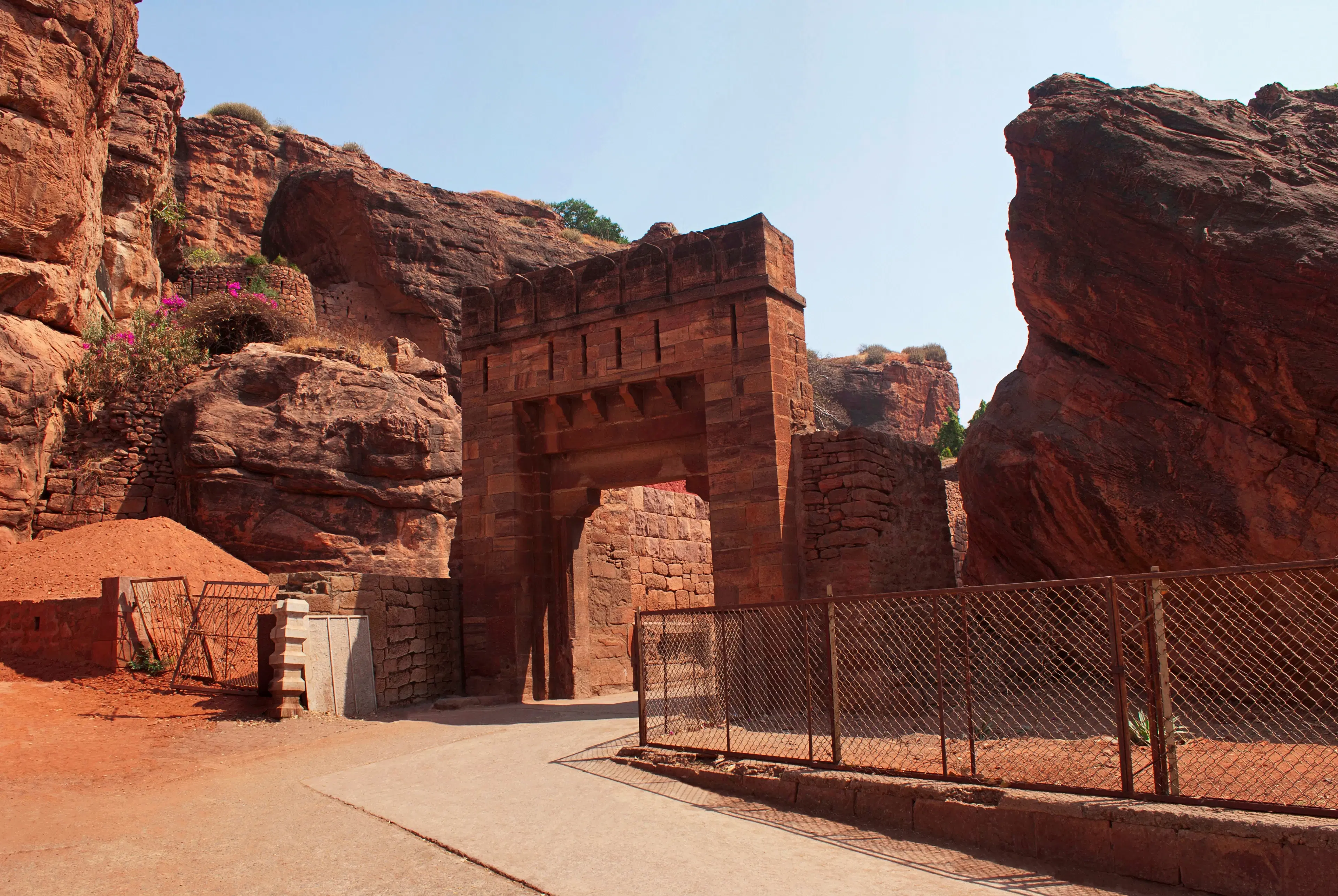
Flights
•04 min read

India's medieval past is painted in the vibrant hues of ancient architecture, bustling marketplaces, and resonant echoes of bygone eras. The legacy of medieval towns in India is not just in their stone and mortar but in the stories of dynasties, trade, art, and human endeavor that shaped these bustling hubs. These towns, steeped in history, unravel the mysteries of ancient Indian towns and the marvels of medieval Indian architecture as centers of administration, religion, and culture.
Medieval towns in India are characterized by fortified structures, majestic temples and mosques, pilgrimage centers, and bustling administrative hubs. They emerged as centers of trade, craftsmanship, and cultural exchange. The strong walls and intricate carvings speak to a time of vibrant economic activity and artistic exploration, capturing the essence of Indian medieval history in every corner.
The diversity of medieval towns is remarkable. Temple towns such as Thanjavur and Somnath were pivotal in religious and cultural life. Administrative centers like Agra and Patna played crucial roles in governance and trade. Trade hubs including Surat and Masulipatnam connected India with global routes, while pilgrimage destinations like Ajmer and Nalanda attracted seekers and scholars from far and wide.
Thanjavur is revered for its awe-inspiring Brihadeeswarar Temple and its rich legacy under the Chola dynasty. This town, renowned for its temple architecture, served as a powerful cultural and administrative center, leaving an indelible mark on the history of ancient Indian towns.
The ruins of Hampi, once the majestic capital of the Vijayanagara Empire, stand as a testament to medieval Indian architecture. Its intricate forts, sprawling palace ruins, and breathtaking landscapes have earned it UNESCO World Heritage status, making it an essential destination for lovers of history and art.
Fatehpur Sikri embodies the splendor of Mughal-era design with iconic landmarks such as the Buland Darwaza and Jama Masjid. Once an administrative nerve center, its storied past is etched in every arch and courtyard, offering glimpses into the opulence and precision of medieval construction.
Somnath is not only a pilgrimage destination but also a historical marvel with medieval temples and fortified structures. Its deep-rooted cultural heritage and enduring religious significance make it a key chapter in the story of India's medieval towns.
Nalanda is celebrated for its ancient university, which once stood at the forefront of learning and Buddhist scholarship. The ruins of Nalanda resonate with the legacy of intellectual pursuit and serve as a beacon of medieval Indian history.

Ajmer is a captivating blend of spirituality and history. Home to the revered Ajmer Sharif Dargah and impressive medieval forts, it has long been a pivotal pilgrimage destination and cultural hub, reflecting the multifaceted nature of India’s past.
Agra is synonymous with the sublime Mughal-era legacy, visible in architectural masterpieces such as the Taj Mahal and Agra Fort. As a major center of administration and trade during medieval times, Agra offers rich insights into the era’s cultural and economic dynamism.
Historically, Surat thrived as a bustling trade hub and port city, bridging India with international markets. Its dynamic past as one of the foremost old cities in India adds to the allure for history enthusiasts and explorers alike.
Masulipatnam is notable for its role as a medieval trading port. The town presents a unique blend of cultural influences and sturdy, fortified structures, making it a fascinating study in the evolution of trade and architecture in India's past.
Jodhpur, with its stunning Mehrangarh Fort and well-preserved medieval architecture, stands as a symbol of the regal heritage of Rajasthan. Its narrow lanes and bustling bazaars tell stories of a time when this cultural capital was at the heart of Indian medieval history.
"Did you know? Temple towns like Thanjavur were not just places of worship but also thriving centers of trade, education, and art during medieval times. They played a pivotal role in shaping India's cultural and economic landscape."
The architectural styles of medieval towns are a mosaic of influences. From the intricate Dravidian temple designs to the robust Mughal forts and the graceful Indo-Islamic motifs, these structures epitomize the fusion of artistic traditions. Each edifice tells a story of innovation, passion, and the melding of diverse cultural imprints.
Efforts to conserve these heritage towns are essential to maintaining the legacy of Indian medieval history. Preservation projects and cultural initiatives help safeguard these monuments, ensuring that the fascinating past of historical places in India is accessible for future generations of wanderers, planners, professionals, and luxury seekers who wish to experience living history firsthand.

To truly immerse yourself in the charm of India's medieval towns, consider traveling during the cooler months, when the weather is pleasant. Many of these destinations host festivals and cultural events that enrich the travel experience, providing a deeper connection with the local heritage.
These towns are well-connected by road, rail, and air, making travel a breeze. When planning your itinerary, explore nearby attractions that complement the historical narrative of the region. Whether you are a spontaneous wanderer or a meticulous planner, each journey into medieval India promises intriguing discoveries at every turn.
Medieval towns in India included temple towns, trade hubs, administrative centers, and pilgrimage destinations like Thanjavur, Hampi, Surat, and Nalanda.
India was referred to by various names in medieval times, including Hindustan, Bharat, and Jambudvipa, depending on the region and ruling dynasties.
Several medieval kingdoms thrived in India, such as the Chola dynasty, Vijayanagara Empire, Mughal Empire, and Rajput kingdoms.
India is home to numerous medieval towns, many preserved as cultural heritage sites, with this blog highlighting 10 significant ones.
Medieval towns were crucial in shaping India's cultural, architectural, and economic history, serving as hubs for trade, religion, administration, and craftsmanship.
The medieval towns in India open a window to a vibrant past filled with architectural wonders, cultural richness, and historic significance. Exploring these ancient Indian towns allows travelers to immerse themselves in unique experiences and witness first-hand the evolution of medieval Indian architecture and heritage. These destinations remind us that every stone has a story to tell, inviting all inquisitive minds to journey into India's fascinating legacy.